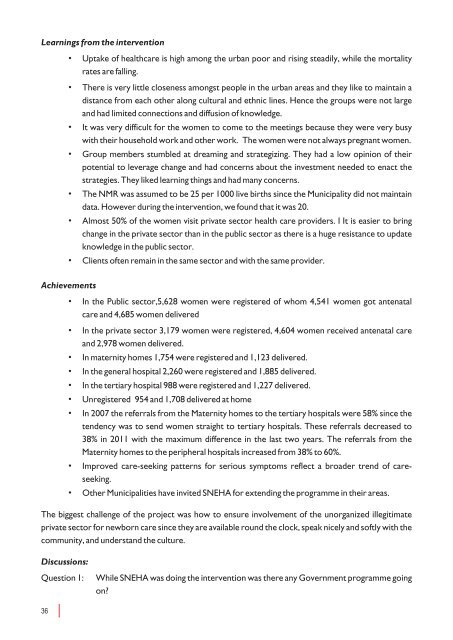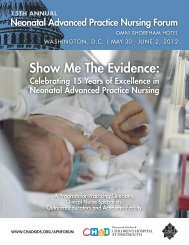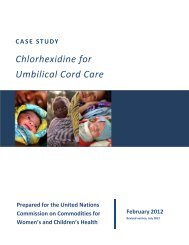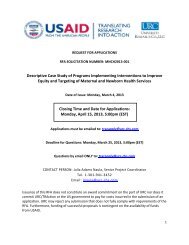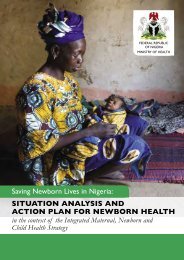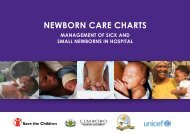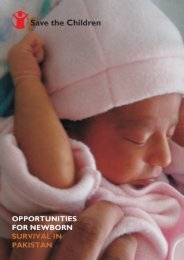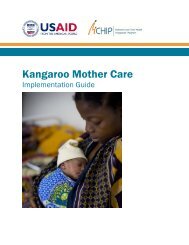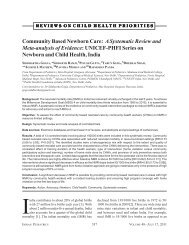Download Resource - Healthy Newborn Network
Download Resource - Healthy Newborn Network
Download Resource - Healthy Newborn Network
You also want an ePaper? Increase the reach of your titles
YUMPU automatically turns print PDFs into web optimized ePapers that Google loves.
Learnings from the intervention• Uptake of healthcare is high among the urban poor and rising steadily, while the mortalityrates are falling.• There is very little closeness amongst people in the urban areas and they like to maintain adistance from each other along cultural and ethnic lines. Hence the groups were not largeand had limited connections and diffusion of knowledge.• It was very difficult for the women to come to the meetings because they were very busywith their household work and other work. The women were not always pregnant women.• Group members stumbled at dreaming and strategizing. They had a low opinion of theirpotential to leverage change and had concerns about the investment needed to enact thestrategies. They liked learning things and had many concerns.• The NMR was assumed to be 25 per 1000 live births since the Municipality did not maintaindata. However during the intervention, we found that it was 20.• Almost 50% of the women visit private sector health care providers. I It is easier to bringchange in the private sector than in the public sector as there is a huge resistance to updateknowledge in the public sector.• Clients often remain in the same sector and with the same provider.Achievements• In the Public sector,5,628 women were registered of whom 4,541 women got antenatalcare and 4,685 women delivered• In the private sector 3,179 women were registered, 4,604 women received antenatal careand 2,978 women delivered.• In maternity homes 1,754 were registered and 1,123 delivered.• In the general hospital 2,260 were registered and 1,885 delivered.• In the tertiary hospital 988 were registered and 1,227 delivered.• Unregistered 954 and 1,708 delivered at home• In 2007 the referrals from the Maternity homes to the tertiary hospitals were 58% since thetendency was to send women straight to tertiary hospitals. These referrals decreased to38% in 2011 with the maximum difference in the last two years. The referrals from theMaternity homes to the peripheral hospitals increased from 38% to 60%.• Improved care-seeking patterns for serious symptoms reflect a broader trend of careseeking.• Other Municipalities have invited SNEHA for extending the programme in their areas.The biggest challenge of the project was how to ensure involvement of the unorganized illegitimateprivate sector for newborn care since they are available round the clock, speak nicely and softly with thecommunity, and understand the culture.Discussions:Question 1:While SNEHA was doing the intervention was there any Government programme goingon?36


